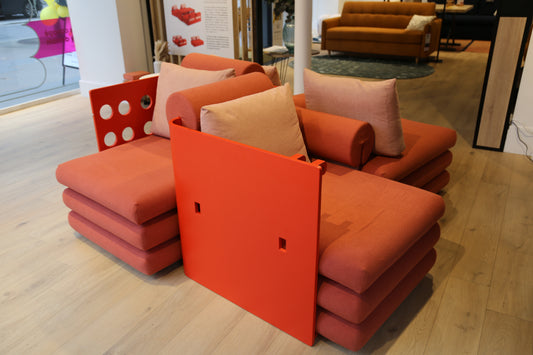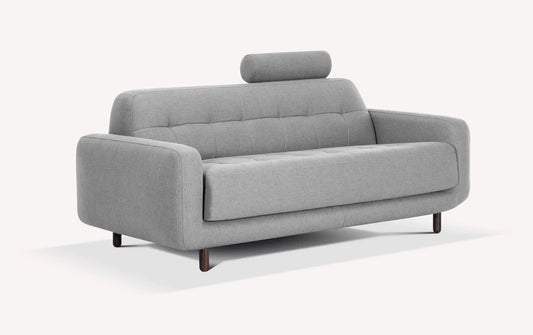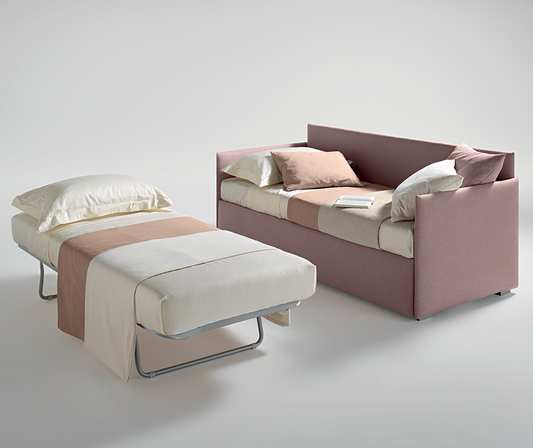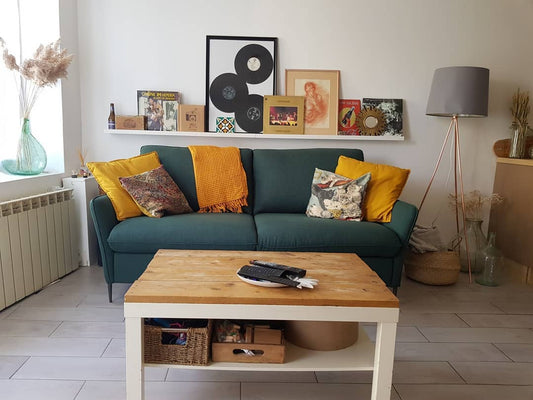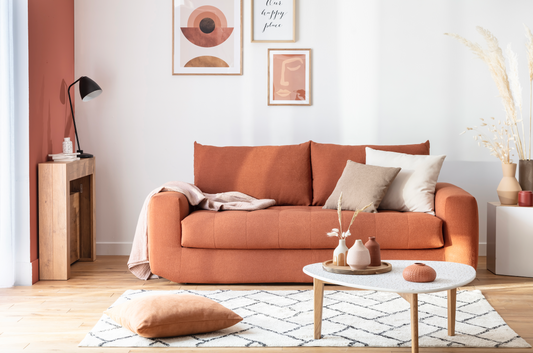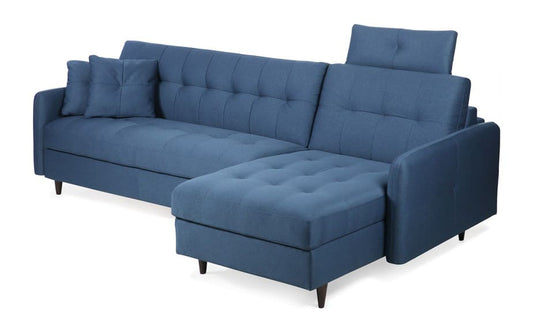Elegant, modern, sober, refined, contemporary, bright, trendy: there is no shortage of adjectives to describe the white sofa which, for some time, has been the star of our living rooms and adapts to all interiors and all decors. Thanks to this article, find out everything there is to know about how to maintain a white sofa.

White is beautiful, it’s pure, it’s delicate but it’s also extremely messy. Have you fallen for a light sofa, in leather or fabric? There are simple and effective methods to maintain it to keep it as impeccable as the first day.
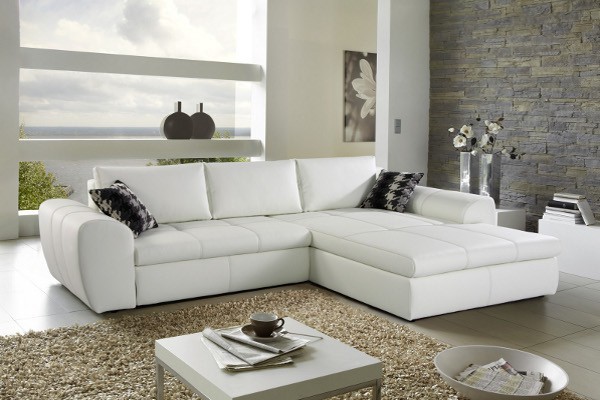
-
Protect: good reflexes
Whatever the color and material, the first thing to do is to ensure that the covering of your sofa is well protected. For sofas with removable fabric covers, nothing could be easier than washing the cover approximately every 6 months, following the washing instructions.
Indeed, not all fabrics are machine washable, some require dry cleaning. If you have the opportunity to buy a second cover, it will be a good investment because alternating them helps extend the life of your sofa. Some sofas are covered with textiles treated against stains and waterproofed, which gives them better resistance. For others, it is possible to spray an anti-stain product such as Texguard.
It is found in drugstores or department stores, to protect untreated textiles. Cotton sofas are the easiest to clean and maintain, but they are also the ones that absorb stains the most. For suede and nubuck sofas , do not hesitate to use a waterproofing spray. Spray over the entire coating for optimal and long-lasting protection.
Before any product spraying, even specialized, it is recommended to carry out a test on a small piece of coating. Preferably in an inconspicuous place. A leather sofa should not be exposed to direct sunlight. Neither too close to a heat source like a fireplace or radiator, otherwise the leather will dry out, crack or turn yellow.
Finally, young children and pets pose a threat to white or light-colored sofas. Covering your fabric or leather sofa with a blanket or sofa throw often allows you to avoid disaster and keep it immaculate.

-
Maintaining a fabric sofa
Under penalty of becoming a nest for dust and mites and seeing its whiteness tarnish, the fabric sofa, even treated, must be dusted very regularly, the ideal frequency being twice a month. Dusting can be done manually using a soft brush but never with a cloth which will spread the dust instead of removing it, or by using a vacuum cleaner. In order not to damage the fabric, it is recommended to use the soft brush tip of the vacuum cleaner and set the power to 400 to 600 watts maximum.

To complete this regular maintenance, it is recommended, once or twice per quarter, to deeply clean the fabric using specialized products to maintain its shine. You can opt for dry cleaning with special textile foams, which can be found commercially everywhere and at reasonable prices.
In this case you will spray the cleaning foam on the entire sofa, once dusted of course. The pause time varies depending on the brand but is necessary for the product to penetrate deeply. We then pass a clean cloth over the sofa, lightly dabbing the treated surface and we finish the operation with a final vacuum cleaner or brushing by hand. The cleaning foam is very effective but difficult to apply regularly to the entire surface.
For a more uniform application it is better to use a special fabric shampoo, also available in drugstores and department stores. Once the sofa is dusted, apply the shampoo mixed with water to the fabric using a clean cloth, dabbing lightly. After rinsing, all you have to do is let it dry for a few hours and the sofa is like new!
Maintaining a leather sofa
Leather sofas also need to be maintained very regularly. Dusting a leather sofa is done once a week using a moistened chamois. Once a month, a special leather sofa maintenance cream helps nourish and hydrate the leather and maintain its suppleness!
For a really deep cleaning, recommended once a year, the best method is to wipe the entire surface of the sofa with a damp cloth soaked in Marseille soap. Some equally effective leather shampoos for deep cleaning are available commercially.

Maintaining a suede or nubuck sofa
Suede or nubuck sofas should be brushed every week to remove dust with a soft brush or a rubber brush specially adapted for these relatively fragile materials. Once a semester, after regular brushing, sofas covered in suede or nubuck should be sprinkled with talcum powder or Sommières earth.
These products, on sale in drugstores or supermarkets, should be left on overnight. The next morning, vacuum the sofa then brush the upholstery using a crepe brush. Your sofa will regain its original splendor as if by magic.
-
Detaching: good tips
The great fear of all owners of a white sofa is the stain! And, with daily use and most often by the whole family, your sofa has little chance of escaping it. One day or another you will have to react quickly and well.
Stain removers sold commercially or grandmother's recipes, today no stain should resist you. Provided, however, that you know which product to use for which type of stain and what type of coating.

Detaching: good tips for fabric sofas
Fabric sofas are often the most fragile so you must react quickly to limit damage. The first thing to do is to gently blot the stain with a clean cloth or absorbent paper, taking care not to rub, which would cause the stain to penetrate deep into the fabric. And going from the outside to the inside to prevent it from spreading.
If it is a greasy stain, on white cotton we remove it either with soapy water or with a solvent such as trichlorethylene. Before using any stain remover product, it is recommended to test the product on a small part of fabric, preferably not visible. On silk, we sprinkle the stains with talcum powder. Sommières earth powder is sprinkled on wool. Let it absorb then brush gently.
Drink, tea or coffee stains can be removed, if you act quickly, using soapy water by rubbing gently with barely damp or dry Marseille soap. Or with a solution of alcohol or vinegar that will be rinsed with water. For old or stubborn stains, try a rust remover, hydrogen peroxide or bleach.
Finally, stubborn stains can be removed by rubbing them with a cloth. It must be clean, soaked in hot water (one cup) and added 2 tablespoons of baking soda. Commercially available textile cleaners or stain removers can also be used, but use with caution depending on the type of fabric of your sofa so as not to leave marks or marks.
Detaching: good tips for leather sofas
In the event of a stain on a leather sofa , you can use a moisturizing lotion or a baby cleanser, to be applied gently to the stain, or Marseille soap. This is usually enough to gently remove stains.
For more resistant stains, beat a stiff egg white and mix with the juice of half a lemon. Soak a clean, soft cloth on the stains, insisting well. Once the stain is removed, dab glycerin where it was to nourish the leather.
Special leather stain removers available in stores eliminate all stains. Be careful, however, to test on an inconspicuous part of leather before using them on your entire sofa.
Detaching: good tips for suede or nubuck sofas
Suede or nubuck sofas can be removed using Sommières earth powder which is sprinkled on top. Let it sit then brush gently for light stains. In the case of large or resistant stains, it is better to consult a specialist, in a drugstore or department store, who will offer you a suitable product.
Upstream protection, regular maintenance and an appropriate response in the event of stains, all simple but essential actions to preserve the shine of your white fabric or leather sofa for as long as possible.



 The up and down coffee table: practical on a daily basis for small homes
The up and down coffee table: practical on a daily basis for small homes
 Liftable table: which design to go with my sofa?
Liftable table: which design to go with my sofa?
 Liftable coffee table: round or rectangular? Our advices
Liftable coffee table: round or rectangular? Our advices
 Cleaning laminated or melamine furniture
Cleaning laminated or melamine furniture
 Bad smell in furniture: 10 tips to know
Bad smell in furniture: 10 tips to know
 Comment nettoyer un canapé en velours côtelé : guide complet et conseils pratiques
Comment nettoyer un canapé en velours côtelé : guide complet et conseils pratiques











